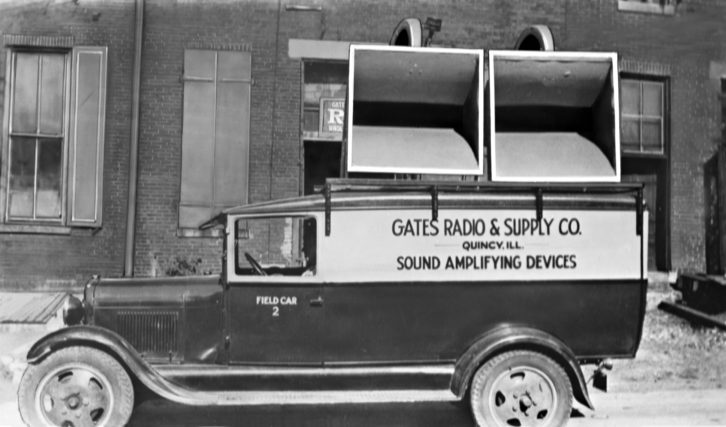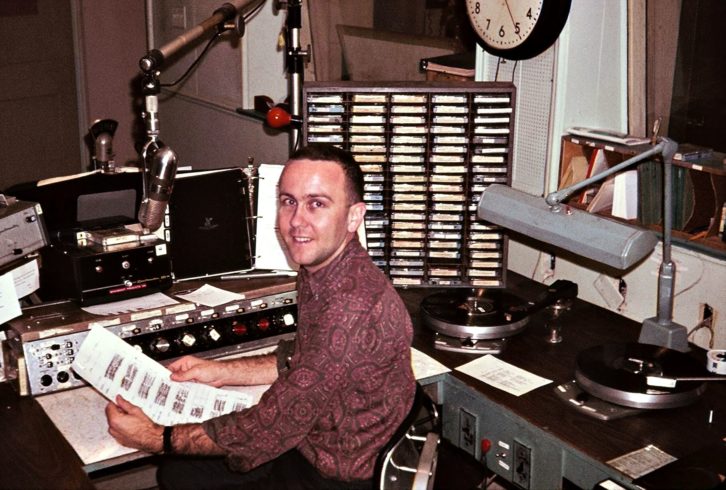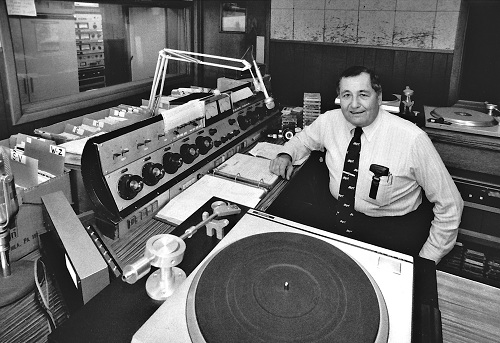The announcement of the sale of Harris Corp.’s Broadcast Division has caused many people to reflect on the long history of that iconic broadcast manufacturer. The Gores Group becomes just the third owner of one of the world’s major broadcast suppliers, and in the process it inherits that company’s 90-year history.
This is a quick look back at that history and some of the company’s important products. (Scroll down for the photo essay.)
Henry C. and Cora B. Gates founded the Gates Radio & Supply Company in 1922 in the kitchen pantry of their apartment in Quincy, Ill., primarily to create a job for their son, Parker S. Gates, who was only 15 years old at the time. He began by selling crystal radios to friends and neighbors in the community.
It would be the only place Parker would ever work.
Parker had always tinkered with electronics, along with his Quincy school chum Elmer Wavering. The two boys put together an early automobile radio to impress their girlfriends, and in the process solved the thorny issues of ignition and multi-vibrator interference that had prevented reception in a vehicle.
Wavering later partnered with Paul Galvin of Chicago to develop and market car radios under the name Motorola, while Parker stayed in Quincy and got into the manufacturing business.
Gates Radio & Supply Company soon became a serious enterprise, and Parker’s father quit his job to head the family business, which they moved into a second floor commercial space in downtown Quincy.
The first major product that Parker developed was a sound system used in early “talkie” movie theaters around the country. The Gates family also developed and sold a broadcast remote amplifier, a transcription turntable and a compact condenser microphone.
BUSINESS BOOM
Two more moves to increasingly larger factory space took place in the 1930s. In the middle of that decade, Gates built one of the industry’s first audio consoles and introduced its first AM transmitter, the 250 Watt model 100A (a restored unit is on display today in the Harris lobby in Quincy).
The war years brought more work when the Gates Radio Company received several subcontracts from RCA for the manufacturing of military shortwave transmitters. Gates purchased a larger factory located on the Mississippi River in Quincy in 1945, and then in 1953 constructed an even larger building.
By the 1950s, Gates Radio had become one of the country’s principal radio equipment suppliers — a major provider of audio consoles, turntables, AM, FM and shortwave radio transmitters and accessories. It also made its first forays into the new field of television at that time.
In December 1957, Harris Intertype Corp., a lithography and typesetting conglomerate that was making its first venture into the field of electronics, acquired the company. Parker Gates stayed on as the president of the division, which gradually phased in the Harris name and is today known as Harris Broadcast Communications.
For many years, however, Parker Gates remained, graduating from president to adviser, staying in touch with his many employees, customers and friends via his ham radio station, W9DZT.
In succeeding decades, Harris became a leader in broadcast technology with innovative FM and TV transmitters — including multi-megawatt AM systems, new AM techniques such as pulse width and digital modulation and some of the industry’s first solid-state AM, FM and TV transmitters.
A full line of television products also was created through both in-house development and corporate acquisitions. More recently, Harris worked closely with the Advanced Television Systems Committee and Zenith/LG to perfect and introduce an over-the-air mobile digital television technology that is just now being introduced to consumers
The company consolidated operations into its present 40-acre factory complex in Quincy in 1977. The senior management, product line management and R&D team moved to Mason, Ohio, in 1998, and later moved its management offices to Englewood, Colorado, in 2010. But the primary manufacturing facility has always remained in Quincy.
Harris Broadcast made many acquisitions over the years, including radio companies Allied Broadcast, Intraplex and Pacific Research & Engineering (PR&E), as well as a number of notable television acquisitions. In the process, the company’s engineers made important contributions into the development of high-definition television and HD Radio technology
In 1992, the Harris Broadcast Division celebrated its 70th anniversary by naming a Quincy street “Parker Gates Avenue.” Parker S. Gates died on Sept. 16, 1986, at the age of 79. His wife Millie and their three daughters still live in Quincy, where Millie recently celebrated her 101st birthday.
Ed. Note: The Gates name was revived in March 2014 when Harris Broadcast, no longer part of Harris Corp., renamed its transmission business as GatesAir.
















Comment on this or any article. Email radioworld@futurenet.com.







